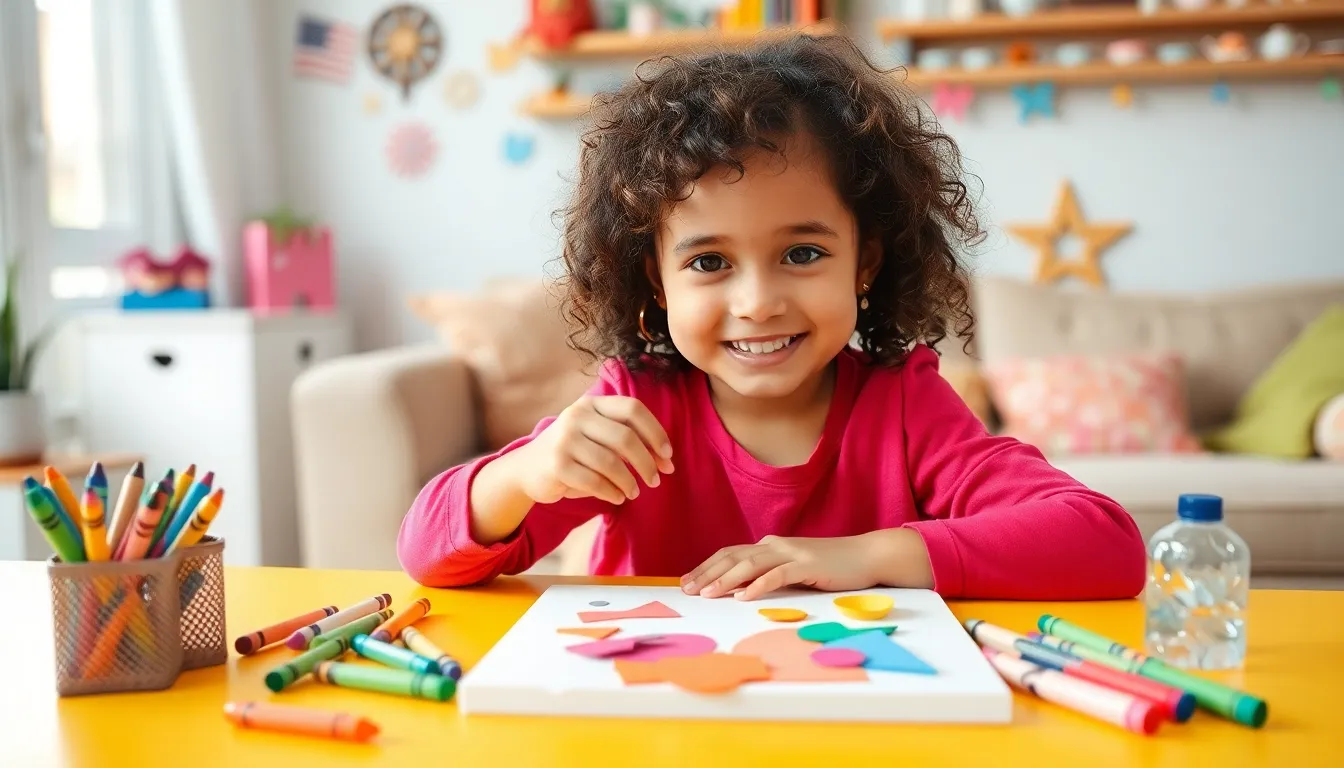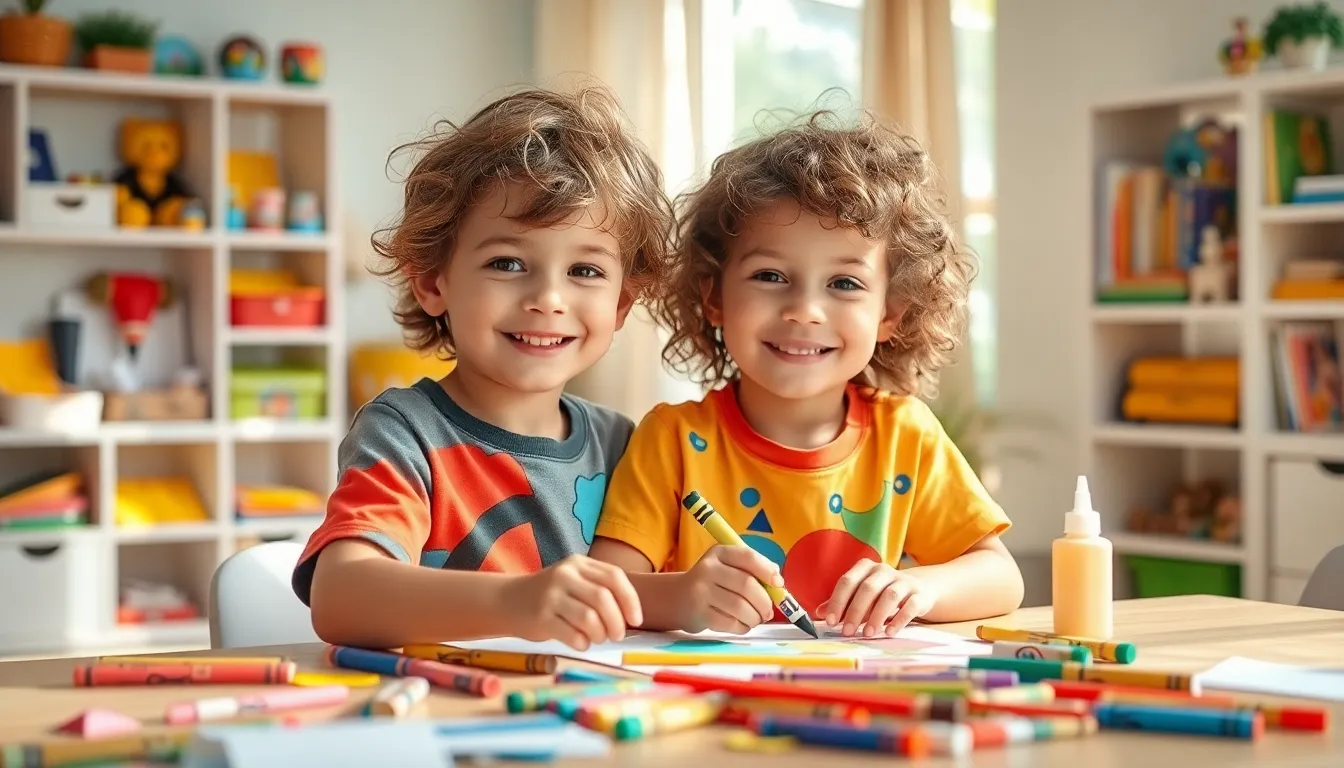In a world where toddlers can turn a living room into a jungle gym faster than you can say “time-out,” finding engaging preschool activities at home can feel like a Herculean task. Luckily, parents have a secret weapon: creativity! With a sprinkle of imagination and a dash of resourcefulness, turning everyday moments into educational adventures is easier than it seems.
Table of Contents
ToggleBenefits of Preschool Activities at Home
Engaging in preschool activities at home offers numerous advantages. Parents can foster essential skills while making learning enjoyable for their children.
Cognitive Development
Cognitive development benefits significantly from home activities. Activities like puzzles and memory games stimulate critical thinking and problem-solving skills. These tasks enhance memory retention and boost attention spans. Engaging children in storytelling improves language skills and vocabulary. Art projects encourage creativity and fine motor skills. Research shows that interactive learning at home promotes curiosity and a love for exploration.
Social Skills Enhancement
Social skills enhancement occurs through collaborative play and group activities. Sharing toys and taking turns teaches children the importance of cooperation. Role-playing scenarios help preschoolers understand emotions and develop empathy. Group projects allow for communication and teamwork, which strengthen relationships. Parents who model positive social interactions set examples for their children. Engaging in these activities nurtures a sense of belonging and community for young learners.
Types of Preschool Activities

Engaging preschoolers at home involves various activities that promote learning and development. The following sections outline popular types of activities.
Arts and Crafts
Arts and crafts activities stimulate creativity and fine motor skills. Children can explore different materials, such as paper, clay, and textiles. Simple projects like painting, collage-making, or fingerprint art encourage self-expression. Designing seasonal crafts fosters a connection to nature and the changing seasons. Involving different media, like crayons, markers, and glue, helps develop dexterity. These activities not only enhance artistic skills but also improve focus and patience. Parents often find that open-ended tasks allow children to use their imagination freely.
Educational Games
Educational games provide a fun way to reinforce learning concepts. Games that promote counting, letter recognition, and shape identification enhance cognitive development. Board games, card games, and interactive apps offer engaging formats for practice. Incorporating storytelling elements into these games enhances language skills and creativity. Memory games that challenge recall abilities also prove beneficial for cognitive growth. Cooperative games foster teamwork and communication among peers. Parents often observe that children remain enthusiastic and motivated when learning through play.
Setting Up a Learning Environment
Creating a conducive learning environment at home enhances preschool activities. Parents can establish areas designed specifically for educational play.
Creating a Designated Space
Designate a specific area for learning activities. This space should be quiet and free from distractions. Use a table or a mat for comfortable seating. Include natural light if possible to promote focus. Arrange art supplies, books, and learning materials within reach. Keep this area flexible, allowing for changes based on different activities. Consider adding children’s artwork to make the space inviting.
Organizing Supplies
Organize educational supplies for easy access. Use bins or shelves to categorize items like crayons, scissors, and paper. Label each container for clarity. Keep frequently used materials near the workspace to minimize interruptions. Rotate supplies based on ongoing projects to maintain interest. Store less frequently used items out of sight to reduce clutter. Regularly assess inventory to ensure all materials are available and functional.
Tips for Engaging Preschoolers
Engaging preschoolers at home requires creativity and strategy. Parents can adopt various approaches to foster interest and enthusiasm in learning.
Keeping Activities Fun
Infusing fun into activities enhances engagement. Use colorful materials in art projects, like finger paints and glitter, to captivate their attention. Incorporate music and movement, as children often enjoy dancing while learning. Make storytelling interactive by using puppets or props, creating a lively experience. Rotate activities regularly to maintain excitement and prevent boredom. Introduce games that combine learning with play, such as scavenger hunts for letters or numbers. This approach captures curiosity while reinforcing essential skills. Celebrate small successes to motivate them and instill a sense of accomplishment.
Encouraging Independence
Encouraging independence builds confidence in preschoolers. Provide choices during activities, like selecting art supplies or picking a story. Set clear, simple tasks that children can complete on their own, such as sorting toys by color or size. Praise their efforts and allow them to share their creations, promoting ownership of their work. Establish routines that empower them to manage their time, such as a daily schedule for learning activities. Gradually step back during tasks, offering support only when necessary. This method encourages problem-solving and decision-making skills vital for their development.
Engaging preschoolers at home doesn’t have to be overwhelming. By embracing creativity and resourcefulness parents can transform everyday moments into enriching experiences. The right activities not only stimulate learning but also foster essential skills like cooperation and communication.
Creating a dedicated learning space and keeping activities fresh and fun ensures that children remain motivated and excited. Encouraging independence through choice and routine builds confidence while enhancing problem-solving abilities.
With the right approach parents can turn their home into a vibrant learning environment that supports their child’s growth and development.




